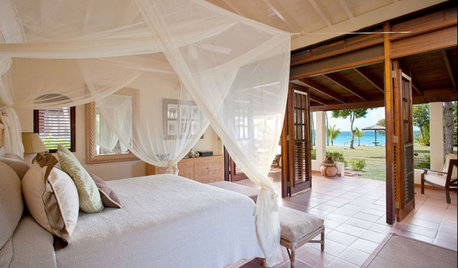I feel so stupid!
butterflymomok
12 years ago
Related Stories

PETSSo You're Thinking About Getting a Dog
Prepare yourself for the realities of training, cost and the impact that lovable pooch might have on your house
Full Story
MOST POPULARSo You Say: 30 Design Mistakes You Should Never Make
Drop the paint can, step away from the brick and read this remodeling advice from people who’ve been there
Full Story
LIFESo You're Moving In Together: 3 Things to Do First
Before you pick a new place with your honey, plan and prepare to make the experience sweet
Full Story
HEALTHY HOME16 Ideas for a Healthy, Feel-Good Home
Making these small tweaks and bigger shifts at home can help you thrive everywhere you go
Full Story
DECORATING GUIDESSo Your Style Is: Cottage
Cheerful, laid back and welcoming, cottage style feels like a giant hug. Find out how to make this appealing look work its magic
Full Story
DECORATING GUIDESSo Your Style Is: Tropical
Easygoing and natural with an exotic allure, rooms designed with a tropical feel exude warmth and graciousness
Full Story
FEEL-GOOD HOME12 Very Useful Things I've Learned From Designers
These simple ideas can make life at home more efficient and enjoyable
Full Story
COLORYou Said It: ‘Adding Color Is About So Much More Than Shock’ and More
Highlights from the week include color advice, Houzzers helping Houzzers and architecture students building community housing
Full Story
GARDENING FOR BUTTERFLIES3 Ways Native Plants Make Gardening So Much Better
You probably know about the lower maintenance. But native plants' other benefits go far beyond a little less watering and weeding
Full StoryMore Discussions








MissButterfly
larry_gene
Related Professionals
Bridgetown Landscape Architects & Landscape Designers · Glen Ellyn Landscape Architects & Landscape Designers · Brentwood Landscape Contractors · Bethel Park Landscape Contractors · San Rafael Landscape Contractors · Merrifield Landscape Contractors · Jacksonville Fence Contractors · Bellmawr Fence Contractors · Castro Valley Fence Contractors · Lady Lake Fence Contractors · Oak Creek Fence Contractors · Coral Shores Window Contractors · Kearns Window Contractors · Los Angeles Window Contractors · Muncie Window Contractorsterrene
MissButterfly
tomatoworm59
ladobe
bananasinohio
butterflymomokOriginal Author
ladobe
butterflymomokOriginal Author
ladobe
klflorida
ladobe
butterflymomokOriginal Author
bananasinohio
wifey2mikey
butterflymomokOriginal Author
ladobe